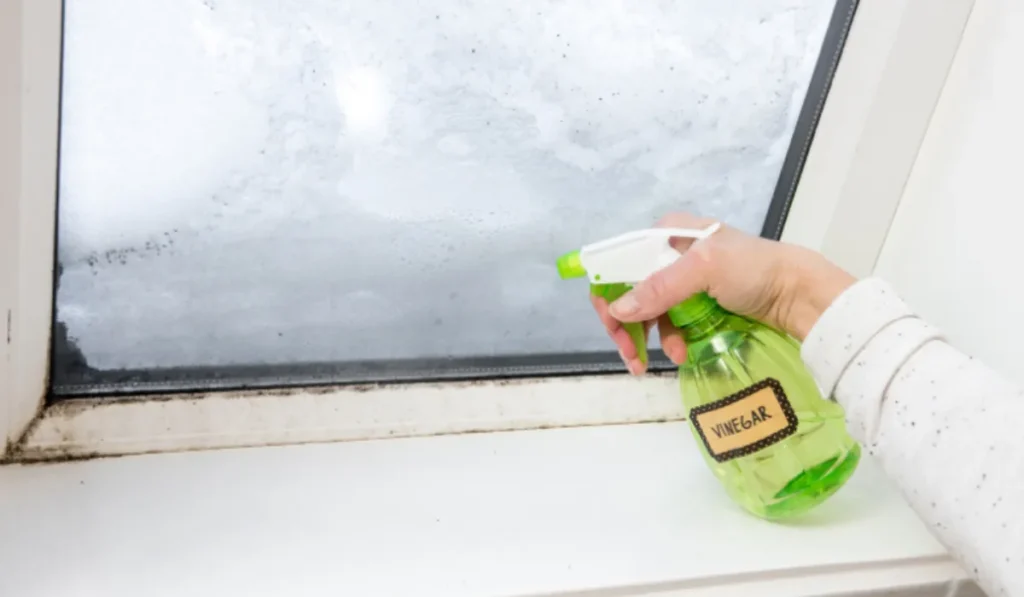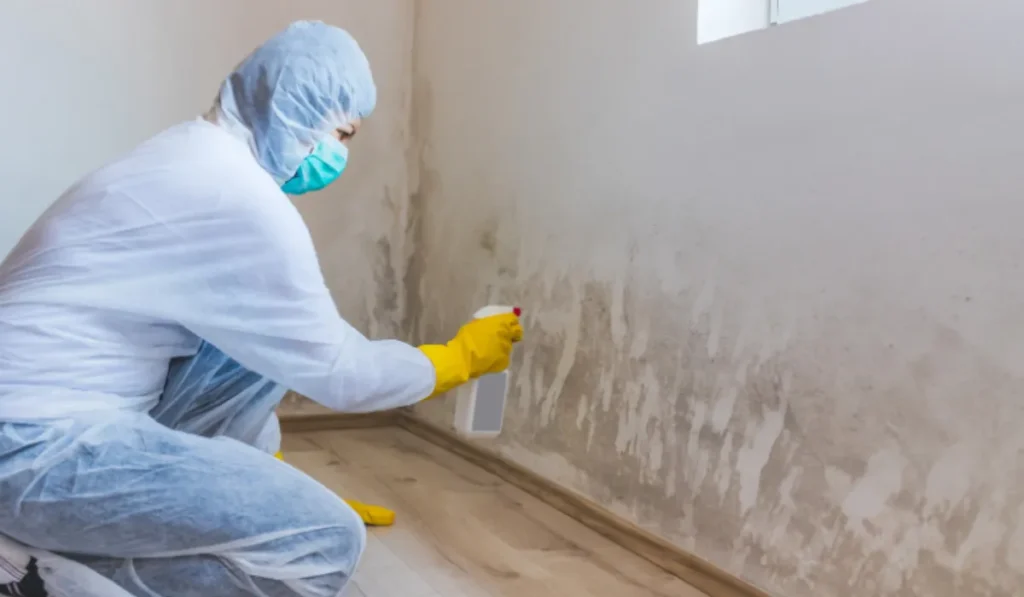Mold requires moisture to grow but can remain dormant without it. If the moisture source is eliminated, active mold growth will stop, but the spores will not die. They can reactivate and grow again if moisture returns.
Understanding Mold and Its Dependence on Moisture

Brief Overview of Mold
Mold is a type of fungus that can be found both indoors and outdoors. It comes in various shapes and colors, like black, white, orange, green, and purple.
Some common types include Aspergillus, often found on foods and in air conditioning systems, and Stachybotrys, also known as black mold, which can appear in homes with water damage.
Molds play a vital role in nature by breaking down dead organic matter, but they can cause problems when they grow in our homes.
Mold’s Life Cycle and Growth Conditions
Mold has a simple life cycle that thrives in moist environments. It begins as a spore, which is like a tiny seed that can travel through the air.
When a spore lands on a damp spot, it can grow into a network of cells called hyphae. These hyphae form the mold colony.
For mold to grow, it needs food, like wood or drywall, darkness, warmth, oxygen, and moisture. Without one of these, especially moisture, mold cannot grow or spread.
The Role of Moisture in Mold Growth and Survival
Moisture is critical for mold growth. Molds absorb water from their environment to break down and digest the material they grow on.
This process is essential for mold to get nutrients and continue its lifecycle. Without enough moisture, mold cannot grow or reproduce.
How Mold Uses Moisture to Reproduce and Spread?
Mold reproduces by creating spores that can spread through the air and settle in new locations. For spores to form and be released, the mold colony needs moisture.
The higher the humidity or the more water present, the more likely it is for mold to reproduce and spread rapidly.
Effects of Depriving Mold of Moisture

How Reducing Moisture Levels Impacts Mold Growth?
When you reduce moisture levels in an environment, you directly affect mold’s ability to grow.
Mold colonies will stop spreading and may start to break down. The visible parts of mold might dry out and can be cleaned more easily. Keeping an area dry is key to stopping mold in its tracks.
Desiccation and Dormancy
When mold dries out, it goes through a process called desiccation. This can cause mold to become dormant, but not dead.
Dormant mold spores are inactive, but they can survive for years in this state. If moisture returns, these spores can spring back to life and start growing again.
Timescale for Mold to Die Without Moisture
It’s tough to say exactly how long mold can survive without moisture because it depends on the type of mold and the environment.
However, without water, active mold growth will cease within 24 to 48 hours. The spores, on the other hand, can remain viable for a very long time.
Factors Affecting Mold’s Survival in Dry Conditions
Different molds have different tolerances to dry conditions. Factors like temperature, the type of surface the mold is on, and the presence of nutrients can all influence how long mold spores remain viable without moisture.
Some molds are more resistant to drying out and can survive longer in a dormant state.
Managing and Preventing Mold Growth

Importance of Moisture Control
Controlling moisture is the most effective way to prevent mold growth. By keeping indoor humidity levels low, you can create an environment that is not suitable for mold to start or continue growing.
This is crucial for maintaining a healthy living or working space and for protecting the structural integrity of buildings.
Methods for Reducing Moisture
There are several ways to reduce moisture in homes and buildings. Use dehumidifiers to keep humidity levels in check, especially in basements or other damp areas. Ensure good airflow by using fans and keeping air ducts clean.
Fix leaks immediately, and dry any wet areas within 24 to 48 hours to prevent mold from starting to grow.
Monitoring Humidity Levels
Keeping an eye on humidity levels is vital. Use a hygrometer to measure the humidity in your home, and aim to keep it below 60 percent.
Some areas like bathrooms and kitchens can become humid easily, so pay extra attention to these rooms.
Proper Ventilation
Proper ventilation is important for preventing mold. Use exhaust fans in bathrooms and kitchens to remove moisture.
Make sure that clothes dryers vent outside and that the ventilation systems throughout the home are functioning correctly.
Maintenance and Repair
Regular maintenance and timely repairs are key in preventing mold growth. Check for roof leaks, keep gutters clean, and ensure that the ground slopes away from your home’s foundation to prevent water from entering.
Seal any cracks in your home’s exterior to keep moisture out. By staying on top of these tasks, you can protect your home from mold.
FAQs About Mold and Moisture
Will mold die if there is no moisture?
Mold will not die without moisture; it will become dormant. The spores remain alive but inactive, and can become active again if moisture returns.
Can mold grow back after it has dried out?
Yes, mold can grow back if it has dried out once moisture is reintroduced into the environment.
Is it enough to just remove moisture to stop mold growth?
Removing moisture will stop active mold growth but will not kill the spores. Additional measures may be necessary to prevent regrowth.
Do mold spores die eventually without moisture?
Mold spores can remain viable for years without moisture. They do not die but remain dormant until moisture is available again.
What happens to mold when the source of moisture is eliminated?
When the source of moisture is eliminated, active mold growth will stop, but the spores will not die. They will stay dormant until a moisture source returns.
Final Thoughts
Mold thrives in moist environments, but removing the water source halts active growth. However, mold spores are resilient and will not perish when dry.
They lie dormant, ready to revive and proliferate if moisture reappears, making complete eradication a challenge without controlling humidity levels.
